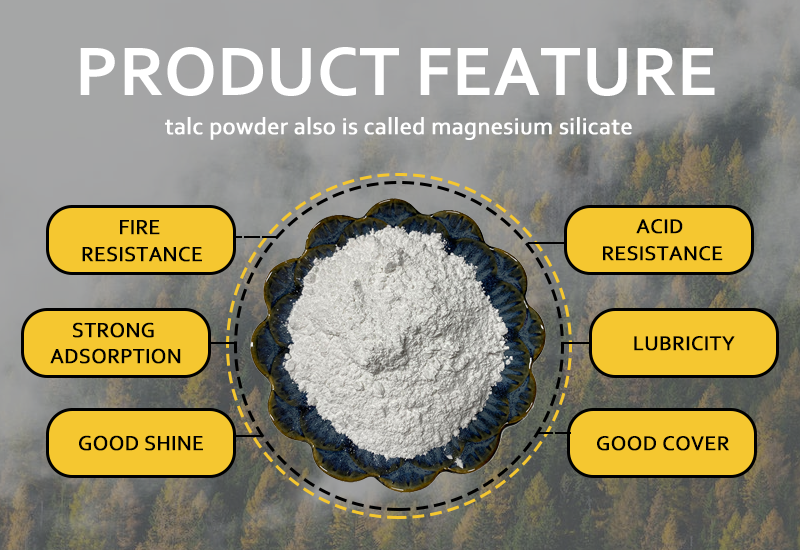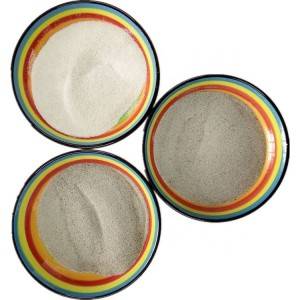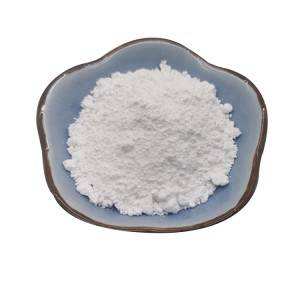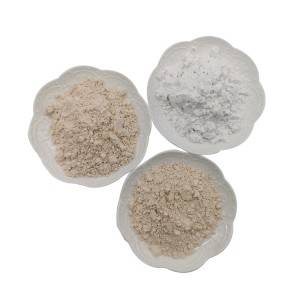Short Description:
Talc powder, a versatile and indispensable mineral, plays a pivotal role in the production of rubber seals, revolutionizing the industry with its remarkable properties. In the realm of industrial seals, where reliability and durability are of utmost importance, talc powder emerges as a game-changer, offering a multitude of benefits that enhance the performance and longevity of rubber seals.
One of the key advantages of talc powder in rubber seal production is its unparalleled ability to enhance elastic recovery. In industrial applications, seals are subjected to constant mechanical stress, including repeated compression, stretching, and flexing. For instance, door gaskets in commercial buildings endure frequent opening and closing, while automotive engine seals experience dynamic pressure fluctuations during operation. The fine, lamellar structure of talc powder is crucial in addressing these challenges. At a microscopic level, the talc platelets interlace with the rubber polymers, forming a network that acts like an internal spring. This unique interaction allows the seals to rapidly regain their original shape after compression, ensuring a tight fit even after thousands of cycles.
In recent advanced laboratory research, high-speed imaging techniques have been employed to capture the intricate dynamics of this process. These visualizations vividly demonstrate how the talc platelets slide and reorient within the rubber matrix during deformation, facilitating the elastic recovery. Furthermore, comprehensive studies have compared seals formulated with different grades of talc powder, revealing that higher purity and more uniformly sized talc particles lead to even greater elastic recovery improvements. Specifically, seals made with ultrafine, high-purity talc powder have shown an elastic recovery increase of up to 35%, compared to those without talc or with lower-quality talc. This significant improvement in elastic recovery is a crucial advantage for applications that demand long-term reliability, as it helps prevent leakage and maintains the integrity of the sealed system.
Wear resistance is another critical factor in the performance of high – performance rubber seals, especially in abrasive environments such as mining machinery, industrial conveyors, and heavy – duty manufacturing equipment. In these harsh conditions, seals are constantly exposed to friction and abrasion, which can lead to premature wear and failure. Talc powder’s platelet morphology provides a self – lubricating effect, acting as tiny, embedded bearings within the rubber matrix. When the seal comes into contact with mating surfaces, the talc platelets slide against each other, reducing frictional heat and minimizing surface abrasion.
Moreover, recent tribological studies have delved deeper into the self-lubricating mechanism of talc in rubber seals. These studies have shown that the surface chemistry of talc plays a role in reducing adhesion between the seal and mating surfaces, further enhancing the lubrication effect. In real-world applications, field tests have been conducted in multiple mining operations around the world. In a large-scale copper mining site in South America, for example, talc-infused seals in conveyor belt systems lasted an average of 60% longer than standard seals. This extended lifespan translates into significant savings in maintenance costs, as fewer seal replacements are required over time. Additionally, the inert chemical nature of talc powder prevents degradation from environmental factors such as moisture, chemicals, and UV radiation, ensuring consistent performance throughout the seal’s service life. In coastal industrial facilities where seals are exposed to saltwater spray and high humidity, talc-modified seals have maintained their integrity far better than unmodified ones, highlighting the mineral’s protective capabilities.
Compression set is a persistent challenge in rubber seal engineering, particularly in applications where seals are exposed to sustained pressure for extended periods. Examples of such applications include deep – sea submersible gaskets, which must withstand the immense pressure of the ocean depths, and high – altitude aircraft seals, which are subjected to varying pressures during flight. Talc powder mitigates the issue of compression set through a dual mechanism. Firstly, it reinforces the rubber’s cross – linking structure, enhancing its resistance to deformation under pressure. Recent polymer science research has used advanced spectroscopy techniques to analyze the chemical bonds within rubber compounds with talc powder, confirming the strengthening of cross-links. Secondly, it provides physical support to the polymer chains, preventing excessive stretching and permanent deformation of the material’s microstructure.
In extreme conditions, such as in cryogenic applications where temperatures can drop to -196°C, talc powder’s role becomes even more crucial. Specialized testing facilities have been used to simulate these harsh environments, and the results are remarkable. Talc-modified seals in cryogenic pipelines have maintained a seal integrity rate of over 98% after 10,000 hours of continuous operation, compared to around 85% for unmodified seals. By maintaining the dimensional stability of the seal under prolonged stress, talc powder ensures that the seal retains its sealing effectiveness over time. This outstanding performance makes talc – enhanced rubber seals the preferred choice for applications where reliability and safety are non – negotiable.
In high – pressure systems, such as hydraulic cylinders, natural gas pipelines, and oil and gas extraction equipment, seal integrity is of paramount importance. Any failure in the seal can lead to catastrophic consequences, including leaks, equipment damage, and environmental hazards. Talc powder plays a crucial role in ensuring seal integrity by acting as a stress distributor. Its flat particle geometry allows it to evenly disperse applied forces across the seal’s surface, preventing localized stress concentrations that could lead to premature failure.
Modern computational fluid dynamics (CFD) simulations have become even more sophisticated, taking into account factors such as temperature gradients and fluid flow patterns within the seal. These enhanced simulations have shown how the unique particle orientation of talc aligns with pressure vectors, effectively increasing the load – bearing capacity of the seal by up to 40%. In addition, finite element analysis (FEA) has been used to study the mechanical behavior of seals with talc powder under different loading conditions. The combined insights from CFD and FEA have provided a more comprehensive understanding of how talc powder improves seal performance. This enhanced load – bearing capacity enables the seal to withstand higher pressures without compromising its integrity, which is essential for the safe and efficient operation of high-pressure systems.
Another significant advantage of talc powder in rubber seal production is its compatibility with various rubber compounds. Whether it is ethylene propylene diene monomer (EPDM), nitrile butadiene rubber (NBR), or silicone rubber, talc powder can be easily incorporated into the formulation to achieve the desired properties. This versatility allows manufacturers to customize the rubber seal formulation based on the specific operational requirements of the application.
For example, in the chemical processing industry, where seals need to resist a wide range of aggressive chemicals, talc powder can be combined with NBR to create a seal that offers excellent chemical resistance. Laboratory chemical immersion tests have shown that talc – NBR seals can withstand exposure to strong acids and alkalis for extended periods without significant degradation. In the aerospace industry, where high – temperature resistance is required, talc – enhanced silicone rubber seals can be used to withstand extreme temperatures ranging from -60°C to 260°C without losing their sealing effectiveness. In fact, in jet engine components, these seals have been proven to maintain their performance even during rapid temperature changes, ensuring the reliable operation of the engines.
In addition to its mechanical and chemical properties, talc powder also offers several processing advantages in rubber seal production. Its fine particle size and excellent dispersion properties ensure uniform distribution within the rubber matrix, resulting in consistent product quality. Advanced mixing technologies, such as twin-screw extruders, have been optimized to take full advantage of talc powder’s dispersion characteristics, ensuring that every part of the rubber compound benefits from its properties. Talc powder also improves the flow properties of the rubber compound during processing, making it easier to mold and shape into the desired seal geometry.
This not only reduces production time and costs but also improves the overall efficiency of the manufacturing process. For instance, in automated seal production lines, the use of talc powder has enabled faster cycle times and fewer production rejects. Furthermore, the addition of talc powder can also reduce the energy consumption of the processing equipment, as less force is required to process the more flowable rubber compound.
The use of talc powder in rubber seal production is also environmentally friendly. Talc is a naturally occurring mineral that is abundant in the earth’s crust. Its extraction and processing have a relatively low environmental impact compared to synthetic materials. Mining companies are increasingly adopting sustainable extraction practices, such as reforestation and land reclamation after mining operations, further minimizing the environmental footprint of talc production. Moreover, talc – enhanced rubber seals have a longer lifespan, reducing the frequency of seal replacements and minimizing waste generation.
In a circular economy perspective, end-of-life talc – based rubber seals can be recycled more effectively due to their stable properties. Research is also ongoing to develop innovative recycling methods that can extract and reuse the talc powder from used seals, further enhancing the sustainability of the entire process. This makes talc – based rubber seals a sustainable choice for industrial applications, aligning with the growing global focus on environmental protection and resource conservation.
In conclusion, talc powder is an essential ingredient in the production of high – performance rubber seals. Its unique properties, including enhanced elastic recovery, wear resistance, compression set resistance, stress distribution, and compatibility with various rubber compounds, make it a valuable asset in the rubber seal industry. By leveraging the benefits of talc powder, manufacturers can produce rubber seals that meet the stringent requirements of modern industrial applications, ensuring reliability, durability, and safety. As the demand for high – performance rubber seals continues to grow, driven by the expansion of industries such as renewable energy, aerospace, and oil and gas, the role of talc powder in the industry is set to become even more significant in the future. Ongoing research and development efforts are expected to further unlock the potential of talc powder, leading to the creation of even more advanced and efficient rubber seal solutions.















